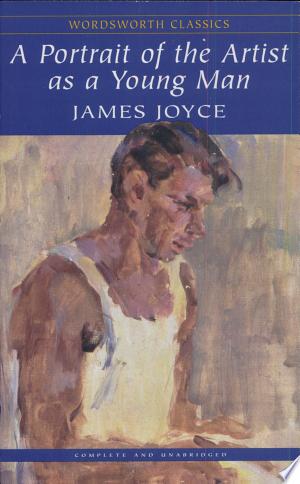Estimated read time: 7 min read
One Sentence Summary
A young man in Ireland struggles with religion, family, and his own artistic ambitions.
Table of Contents
Introduction
"A Portrait of the Artist as a Young Man" is a groundbreaking novel by James Joyce, first published in 1916. It is a semi-autobiographical novel that explores the growth and development of the protagonist, Stephen Dedalus, from childhood to adulthood. The novel is known for its innovative narrative style and its deep exploration of the psychological and intellectual growth of its main character. Set in late 19th-century Ireland, the book offers a profound exploration of family, religion, and national identity. Through its vivid prose and introspective narrative, "A Portrait of the Artist as a Young Man" remains a significant work in the canon of modernist literature.
Brief Synopsis
Plot Overview and Setting
The novel is divided into five chapters, each representing a different stage in Stephen Dedalus's life. It begins with Stephen as a young boy in Clongowes Wood College, a Jesuit boarding school. It then follows his experiences at Belvedere College, where he becomes increasingly introspective and begins to question the strict religious and social norms that govern his life. As he enters university, Stephen grapples with his burgeoning artistic ambitions and his struggle to break free from the constraints of his upbringing. The story culminates with Stephen's decision to leave Ireland and pursue his calling as a writer in Europe.
Main Characters
The novel features several significant characters, but the central focus is on Stephen Dedalus and his immediate family.
| Character | Description |
|---|---|
| Stephen Dedalus | The protagonist of the novel, he is a sensitive and intellectually curious young man who seeks to forge his own path in life, free from the constraints of religion and tradition. |
| Simon Dedalus | Stephen's father, a well-meaning but flawed man who struggles with financial and personal challenges. |
| Mary Dedalus | Stephen's mother, a devoutly religious woman who cares deeply for her son's well-being. |
| Dante | Stephen's strict and devoutly religious aunt, whose influence plays a significant role in shaping Stephen's early beliefs. |
| Cranly | Stephen's close friend and confidant at university, who serves as a sounding board for Stephen's evolving ideas and aspirations. |
Summary of Different Story Points over Chapters
Chapter 1: Early Childhood
In this chapter, we are introduced to the young Stephen Dedalus as he navigates his early years in a strict Jesuit boarding school. We witness his interactions with his peers, his experiences with authority figures, and his emerging awareness of the complexities of the world around him. Stephen's keen observations and sensitive nature begin to set him apart from his classmates, hinting at the intellectual and emotional journey that lies ahead.
Chapter 2: Adolescence and Family
As Stephen transitions to Belvedere College, he grapples with the dynamics of his family, particularly his father's financial struggles and his mother's unwavering faith. He becomes increasingly introspective and begins to question the religious teachings and societal expectations that have been ingrained in him since childhood. His growing intellectual curiosity and burgeoning sense of independence lead to internal conflicts and a sense of alienation from his peers.
Chapter 3: University Life
At University College Dublin, Stephen's intellectual and artistic aspirations come to the forefront. He engages in fervent discussions with fellow students, challenging conventional beliefs and expressing his desire for creative freedom. He also experiences romantic infatuation, further shaping his evolving worldview. The chapter captures Stephen's growing disillusionment with the constraints of Irish society and his longing for artistic expression and personal fulfillment.
Chapter 4: Artistic Awakening
Stephen's internal struggles intensify as he grapples with the conflict between his artistic ambitions and the religious and societal pressures that weigh heavily upon him. He experiences a series of epiphanies that lead him to a profound understanding of his calling as an artist, despite the personal sacrifices and isolation it may entail. His fervent desire for self-expression and individuality propels him towards a transformative realization of his identity and purpose.
Chapter 5: Departure and Self-Discovery
In the final chapter, Stephen resolves to leave behind the confining influences of his homeland and embark on a journey of self-discovery and artistic fulfillment. He sets his sights on a future beyond Ireland, symbolizing his quest for intellectual and creative liberation. The novel concludes with Stephen's resolute departure, signifying his rejection of societal norms and his pursuit of a life dedicated to artistic expression and personal autonomy.
Main Events
- Stephen's experiences at Clongowes Wood College and Belvedere College
- His intellectual and emotional development at University College Dublin
- The internal conflicts and epiphanies that lead to his artistic awakening
- Stephen's decision to leave Ireland and pursue a life dedicated to artistic expression
Themes and Insights
Themes
| Theme | Description |
|---|---|
| Identity and Self-Discovery | The novel delves into Stephen's quest for personal identity and his struggle to define himself in a society that imposes rigid expectations and constraints. |
| Religion and Rebellion | The tension between religious orthodoxy and individual autonomy is a central theme, as Stephen grapples with the conflicting influences of faith and his desire for intellectual and artistic freedom. |
| Art and Alienation | The novel explores the role of the artist as an outsider and the isolating, yet transformative, nature of creative expression. Stephen's artistic pursuits lead to his detachment from conventional norms and his search for a sense of belonging beyond societal confines. |
Insights
- Psychological Development: The novel offers a profound exploration of Stephen's psychological growth, depicting the evolution of his thoughts, emotions, and aspirations from childhood to adulthood.
- Social and Cultural Constraints: Through Stephen's experiences, the novel illuminates the restrictive nature of societal and cultural norms, prompting introspection on the impact of such constraints on personal growth and fulfillment.
- Artistic Integrity: The book delves into the conflict between artistic integrity and societal expectations, inviting contemplation on the sacrifices and triumphs inherent in the pursuit of creative expression.
Reader's Takeaway
"A Portrait of the Artist as a Young Man" offers readers a compelling journey through the intellectual, emotional, and artistic evolution of its protagonist. It prompts reflection on the complexities of personal identity, the struggle for autonomy in the face of societal pressures, and the transformative power of artistic pursuit. Readers are invited to delve into the intricate narrative and resonate with the universal themes of self-discovery, rebellion, and the pursuit of individual truth.
Conclusion
In "A Portrait of the Artist as a Young Man," James Joyce presents a masterful portrayal of the protagonist's progression from a young, impressionable boy to a resolute and self-aware artist. The novel's intricate exploration of identity, religion, and artistic pursuit continues to resonate with readers, cementing its status as a timeless work of modernist literature. Joyce's evocative prose and keen psychological insight invite readers to immerse themselves in the profound journey of self-discovery and defiance that defines the novel's enduring legacy.
A Portrait of the Artist as a Young Man FAQ
What is 'A Portrait of the Artist as a Young Man' about?
The novel follows the protagonist, Stephen Dedalus, as he grows up in Ireland and struggles with his religious upbringing, his identity, and his aspirations to become an artist.
What is the writing style of 'A Portrait of the Artist as a Young Man'?
James Joyce's writing style in this novel is known for its stream-of-consciousness narrative, vivid imagery, and experimental language.
Is 'A Portrait of the Artist as a Young Man' part of a series?
No, 'A Portrait of the Artist as a Young Man' is a standalone novel.
What themes are explored in 'A Portrait of the Artist as a Young Man'?
The novel delves into themes of religion, identity, nationalism, and the struggles of an artist to find his place in the world.
What is the historical context of 'A Portrait of the Artist as a Young Man'?
The novel is set in the early 20th century, a time of significant social and political change in Ireland, and reflects the influence of Irish nationalism and the Catholic Church on the protagonist's life.





